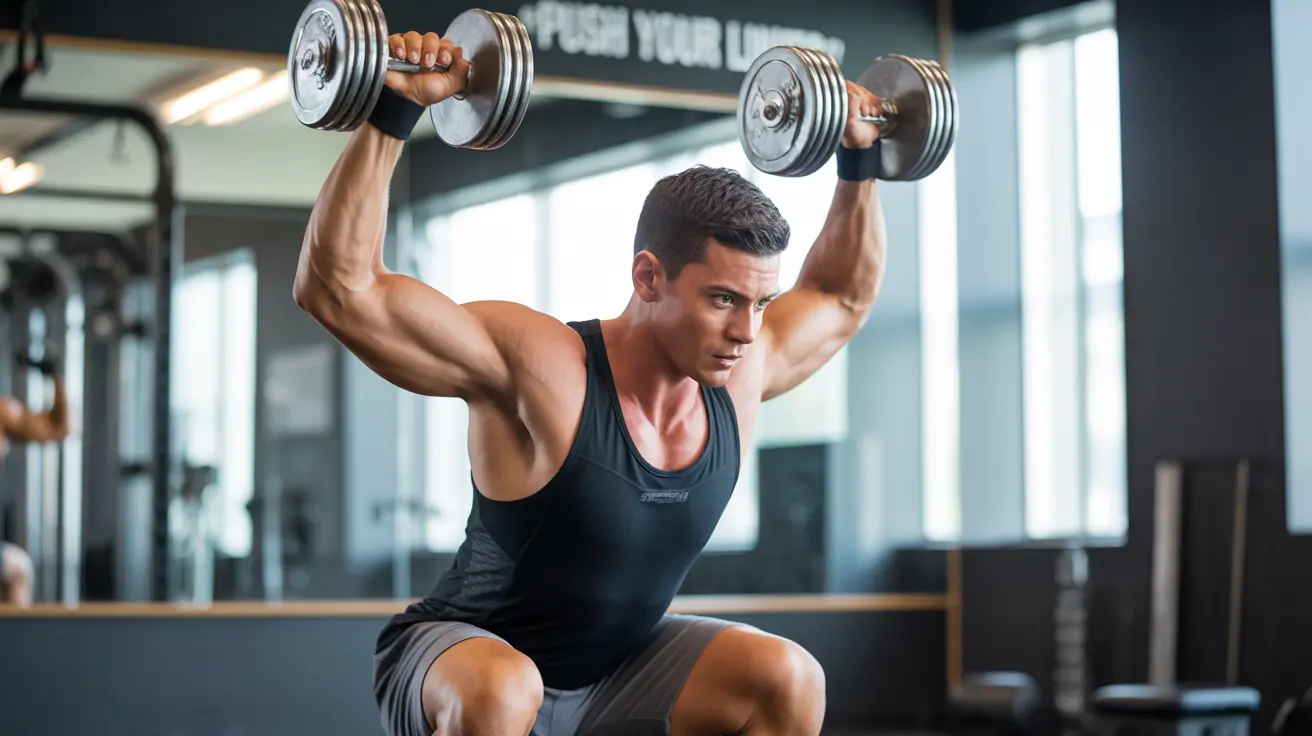The dumbbell high pull is a dynamic compound exercise that combines power, coordination, and full-body engagement. This explosive movement not only enhances athletic performance but also builds functional strength that carries over to everyday activities. Whether you're an athlete looking to improve power output or a fitness enthusiast seeking to diversify your workout routine, understanding the proper execution and benefits of the dumbbell high pull is essential.
Understanding the Dumbbell High Pull
The high pull is a powerful movement that primarily targets the posterior chain while engaging multiple muscle groups throughout the body. This exercise serves as an excellent introduction to more complex Olympic lifting movements and can be performed with various equipment, though dumbbells offer unique advantages in terms of stability and unilateral training options.
Primary Muscle Groups Targeted
The dumbbell high pull engages several major muscle groups in a coordinated sequence:
- Trapezius and upper back muscles
- Deltoids (shoulder muscles)
- Hamstrings and glutes
- Core stabilizers
- Forearms and grip muscles
Proper Form and Technique
Executing the dumbbell high pull with proper form is crucial for both safety and effectiveness. Here's a detailed breakdown of the movement:
Starting Position
Begin with feet hip-width apart, holding a dumbbell in front of your thighs with an overhand grip. Maintain a slight bend in your knees and hinge at your hips to lower the weight, keeping your back straight and core engaged.
The Pull Phase
Explosively extend your hips and knees while simultaneously pulling the dumbbell upward. As the weight reaches chest height, pull your elbows high and wide, keeping the dumbbell close to your body. The movement should be smooth and powerful, rather than jerky or uncontrolled.
The Return
Control the descent of the weight back to the starting position. Avoid dropping the dumbbell or losing form during this phase. The entire movement should be fluid and controlled.
Single-Arm vs. Double-Arm Variations
Both single-arm and double-arm dumbbell high pulls offer distinct advantages:
Single-Arm Benefits
- Identifies and addresses strength imbalances
- Enhances core stability
- Improves unilateral coordination
- Allows for greater focus on form with each side
Double-Arm Benefits
- Enables heavier total load
- Provides balanced muscle development
- More closely mimics Olympic lifting movements
- Excellent for power development
Olympic Lifting Connection
The dumbbell high pull serves as an excellent preparatory exercise for Olympic lifting movements. It teaches proper hip drive, triple extension, and power development while being more accessible than traditional barbell clean and snatch variations. This makes it an invaluable tool for both beginners and experienced lifters looking to improve their Olympic lifting technique.
Safety Considerations and Progression
While the dumbbell high pull is generally safe when performed correctly, proper progression and attention to form are essential:
- Start with lighter weights to master the movement pattern
- Focus on explosive power rather than heavy weight
- Maintain proper posture throughout the movement
- Warm up thoroughly before performing high pulls
- Progress gradually to heavier weights
Frequently Asked Questions
What muscles does the dumbbell high pull work and how does it benefit athletic performance?
The dumbbell high pull primarily works the posterior chain, including the trapezius, deltoids, hamstrings, and glutes. It enhances explosive power, improves coordination, and develops the fast-twitch muscle fibers crucial for athletic performance.
How do you properly perform a dumbbell high pull to avoid injury?
Start with feet hip-width apart, hinge at the hips with a slight knee bend, and explosively pull the weight upward while maintaining a straight back. Keep the dumbbell close to your body and control the descent. Focus on proper form before increasing weight.
What are the differences between single-arm and double-arm dumbbell high pull variations?
Single-arm variations better address muscle imbalances and enhance core stability, while double-arm variations allow for heavier loads and better mimic Olympic lifting movements. Both have their place in a well-rounded training program.
Can the dumbbell high pull help improve my ability to do Olympic lifts like the clean and snatch?
Yes, the dumbbell high pull teaches proper hip drive, triple extension, and power development essential for Olympic lifts, while being more accessible and less technically demanding than full Olympic movements.
Is the dumbbell high pull safe for beginners, and what precautions should I take when starting?
The dumbbell high pull is safe for beginners when proper progression is followed. Start with light weights, focus on mastering the movement pattern, ensure thorough warm-up, and gradually increase weight as technique improves.




